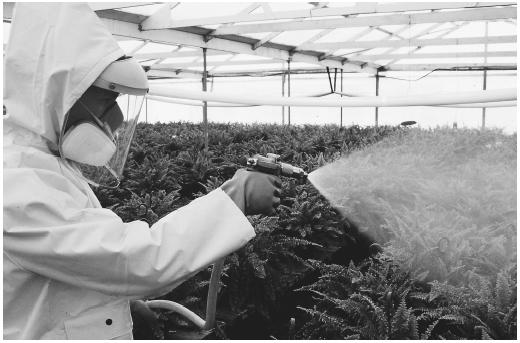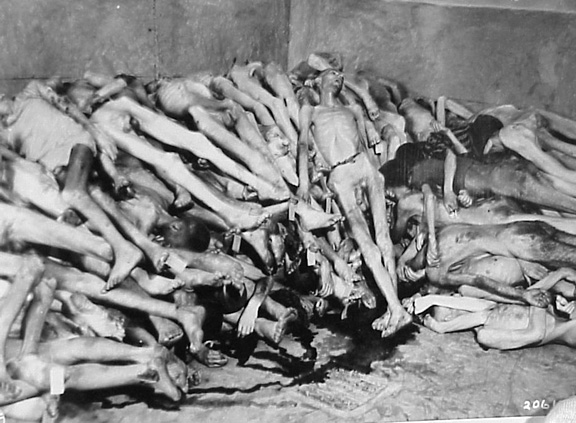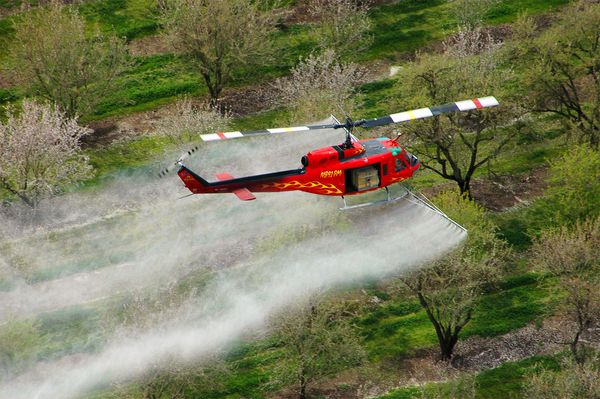
LIVING AND DYING IN A TOXIC WORLD:
THE HUMAN DEFILEMENT OF NATURE
FROM HISTORY TO MODERN TIMES

The use of chemicals and substances harmful to human and planetary health is a practice with an extensive and deadly history. Used for the extermination of human beings as well as the supposed protection of crops and plants, chemical substances have been poisoning our world for years, and continue to affect life for billions of people today. Human distribution of dangerous substances including carbon monoxide, Zyklon B, and numerous other pesticides not only sustains a growing death toll for humans, but further weakens the health of the planet. The exposure of a person to a life-threatening pesticide is a very frequent occurrence in America, especially given that most of our food supply in the United States is treated with some form of insect repellant. Our leaders have not taken nearly enough action to monitor or halt the use of certain chemicals, and it is social and political negligence that will continue to provide all life on earth with a polluted, toxic environment.
ORIGINS OF PESTICIDES AND MILITARY USE

The first pesticides used to deflect insects were extremely toxic combinations, often including ingredients such as arsenic and cyanide. Use of these first products was discontinued after they were found to be either ineffective or simply too toxic (Oregon State). Pesticides developed in later years started to contain more man-made substances and synthetic compounds rather than plant-based ingredients. As synthetic chemistry began to dominate the development of pesticides, one of the most dangerous substances, known as DDT was discovered to be an effective insecticide. A Swiss chemist, Paul Muller was the first to discover the insecticidal qualities of DDT. DDT and similar substances were originally developed along with other organophosphate compounds in the 1930s, and were primarily meant to be used as weapons (Toxipedia).
Though other countries including the United States experimented with various chemical weapons and gases in World War I, it was not until the Second World War that the lethal substances would become common - and increasingly more deadly - in military operations. Developed pesticides became recognized as a powerful military weapon in 1935, when Nazi Germany introduced a law that required that all inventions that could be useful for military operations to the Ministry of War. A German scientist by the name of Gerhard Schrader then submitted a sample of a compound known as tabun (originally meant to be used as a nerve agent against insects only) to the Army Weapons Office of Berlin in 1937, after he and his lab assistant were accidentally exposed to the substance (Wikipedia). Realizing the effects on the human body, military forces knew that the tabun was definitely capable of becoming a full-fledged war weapon.
DEVELOPMENT AND USE AS A WEAPON IN NAZI GERMANY

[Nazi gas chamber in Majdanek, Poland.]
After getting an idea of how powerful Schrader's insecticide could possibly be, he was instructed by the Nazi government to refocus his scientific studies on improving the nerve gas to kill humans instead of insects. Factories dedicated to the production of tabun soon became erected in Germany, and years of Schrader's research would lead to the development of the nerve gas known as sarin. Human exposure to sarin is a painful, horrible way to die. The effects include paralysis, convulsions, and ultimately death if not treated in time (Council on Foreign Relations). Nazi forces became much more experimental with using various gases to exterminate human beings, and further sold the murderous idea on the reasoning that gassing would be "euthanasia" for mental patients, or other people deemed unworthy of life (Holocaust Encyclopedia). After Adolf Hitler initiated the Euthanasia Program in 1939, several gas chambers were established to wipe out any citizens his government decided did not deserve life - not only the mentally ill. The gassings of mass amounts of people would continue on until the defeat of Nazi Germany in 1945 (Britannica).
As the development of new strains of nerve gas continued throughout the 1930s and 40s, carbon monoxide became a very popular murder tool for the Nazi military. Firing squads were once the primary choice for mass murders, but then commanders switched gears and wanted to find a way of killing that would spare soldiers of the emotional and psychological effects of close-range killing (PBS). It was accidentally discovered that exposure to carbon monoxide from car exhaust while in an enclosed area could lead to death, it soon became utilized by the Nazis as a weapon to wipe out innocents. Prisoners of concentration camps were often led into rooms that were actually empty cargo vans, and then driven away to a secluded location. Once it was certain that all the passengers were trapped inside, the exhaust fumes of the van were directed into the cargo in order to quickly kill everyone inside.

[Morgue next to gas chamber in Dachau, Germany.]
In Auschwitz, Nazis were craving an even deadlier gas to kill prisoners with. Zyklon B, a substance meant for fumigation, soon replaced the use of carbon monoxide in many gas chambers built for human extermination (Nikzor). Prisoners of the concentration camps were led into large rooms that were advertised as shower rooms or delousing areas. When the chamber was full of prisoners, Zyklon B pellets were placed into the air shafts or ceiling openings. The prisoners who unknowingly inhaled the vaporous substance would have their red blood cells attacked by the presence of the Zyklon B, restricting their oxygen, leading to unconsciousness, and eventually death from loss of air (History Place). The death toll resulting from military use of nerve gases including carbon monoxide is disturbing enough, and the results of chemical warfare and the misuse of pesticides continues to compromise the quality of life on earth today.
ENVIRONMENTAL EFFECTS OF PESTICIDES AND NERVE AGENTS

RELEVANT ARTICLES
A History of Pesticide Use (Oregon State University)
Pesticides: Health and Safety (EPA)
Pesticides on Food (PANNA)
Pesticides: History (Toxipedia)
Pesticides in the United States (Wikipedia)
Initiative of the Impact of Pesticides on Health (World Health Organization)
Environmental Impact of Pesticides (Wikipedia)
Impact of Pesticides Use In Agriculture: Their Benefits and Hazards (National Center for Biotechnology Information)
The Curious Origin of Sarin Nerve Gas (Neatorama)
Zyklon B: An Insecticide Becomes a Means for Mass Murder (Wollheim Memorial)
Auschwitz: Inside the Nazi State (PBS)
Nerve Agents Guide (OSHA)
Methods Used to Destroy Chemical Warfare Agents (CDC)